I was once told, “You could paddle a new river every day for the rest of your life and still not paddle them all.” This sparked my initial interest to explore India as a kayaking destination. I mean, of course, right? The country is massive, with almost unlimited river miles, why wouldn’t it be on my radar. When I was invited to compete in the Malabar River Festival this July, it seemed like a no-brainer.
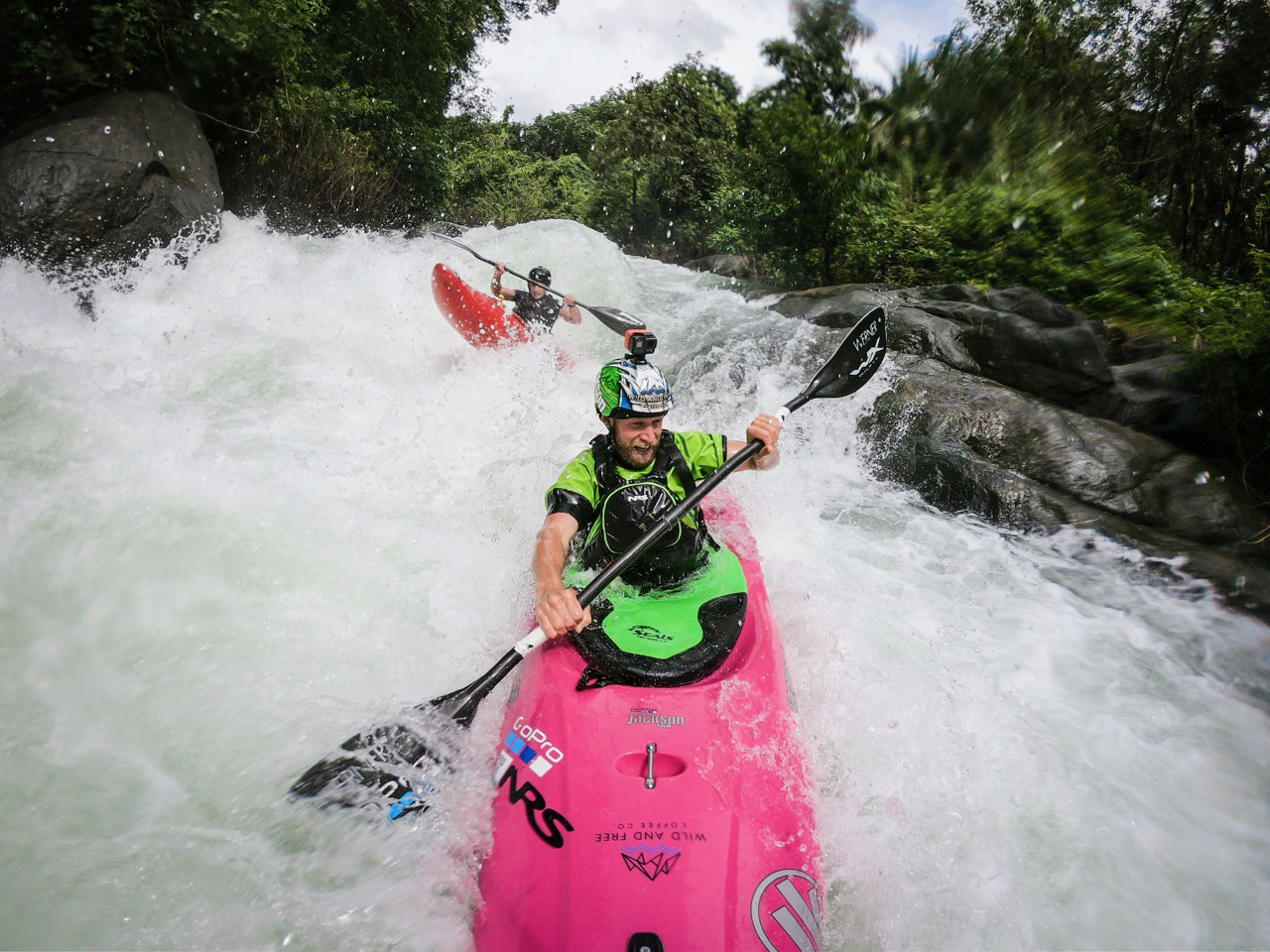
Now, like all things, sometimes it seems easier, in theory, to pack up and travel half way across the world with my kayak. Even as a seasoned veteran—I’ve traveled more with my kayak than without—getting the boat checked in at the counter never fails to be a challenge. Ask Dane Jackson. He was denied and had to buy a new ticket with another airline. Or take one of the British paddlers who paid 900 euros to get his boat on the plane, ouch.
After scouring the Internet and several phone calls, I secured my boat on the plane with a flight on Air Canada. Easy, I thought, as I left the check-in counter and sett of on my first leg. I arrived in Delhi and realized my boat didn’t arrive, and I still had another connection to Kochi in the south of India. As it turns out, when a ton of kayakers fly in for an event, it’s inevitable for several boats to not make it, as mine was one of at least five athletes whose kayak went on its own adventure.
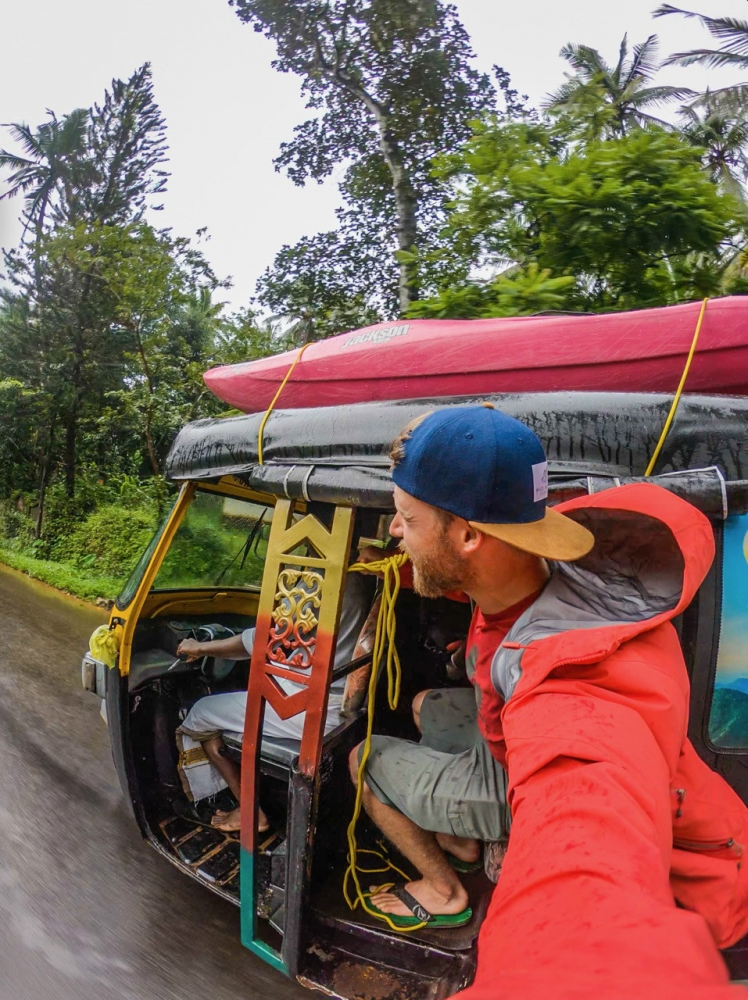
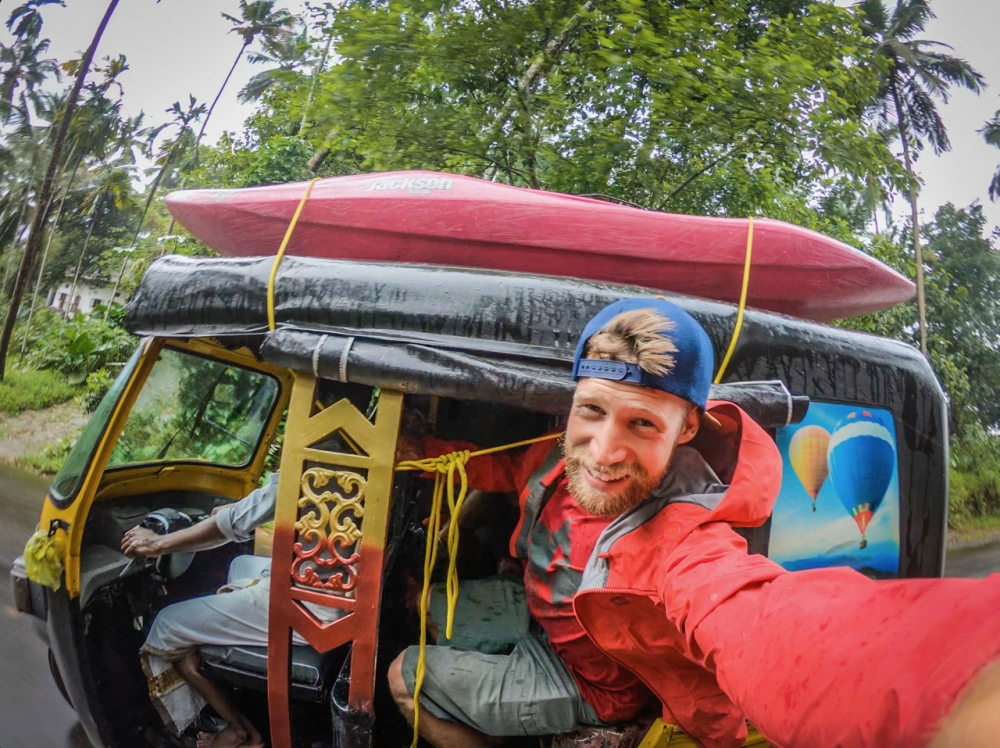
Life goes on, as they say. Having cleared Indian immigration and customs, I gathered my bag, met up with Kalob, Bren and Adrian and we crammed into a shuttle heading for Kerala. For some reason we thought the drive was between four and five hours, which dragged into eight. As we drove, I watched out the window as one town’s population spread out until it blended with the next, with a never ending sea of buildings, homes and people. I was starting to grasp the immensity of India’s population.
After four solid days of traveling, I checked in to my accommodation in Kerala, gorged on curry and crashed. Day after day, I called the airlines trying to locate my boat. The local community was more then willing to loan me a kayak, which made the wait bearable. Luckily, two days later, I reunited with my kayak.

Our first day on the river was an eye-opening experience. We went to the put-in only to find out the water was quite high. It definitely didn’t match the beta we had received about the local “creek run.” Our group, coined the “Send Crew,” included Dane, Kalob, Bren and Adrian. Instead of turning back, we trekked through the dense jungle trying to scout a line within the flooded boulder gardens. Two hours in and only a couple hundred yards downstream from the put-in, we knew we were in for a slow moving day. We eddy hopped and scouted our way down the consistent gradient, twisting corners, and high volume river.
The whole group was a bit on edge. We didn’t know exactly what we were getting into and it was apparent our beta was not super accurate. Locals had also warned us about flash floods, and at one point, the sky darkened and we found ourselves in a torrential downpour. Still not knowing much about the rivers, we jumped out of our boats and scrambled to higher ground. The river didn’t rise and we continued on. We managed to miss our takeout and had to hitch a ride back into town. I learned a lot on that first river day in India. I learned to listen to beta, but know that it could also be completely incorrect and that we should paddle as if it was a first descent, moving slowly and cautiously in these flood conditions.
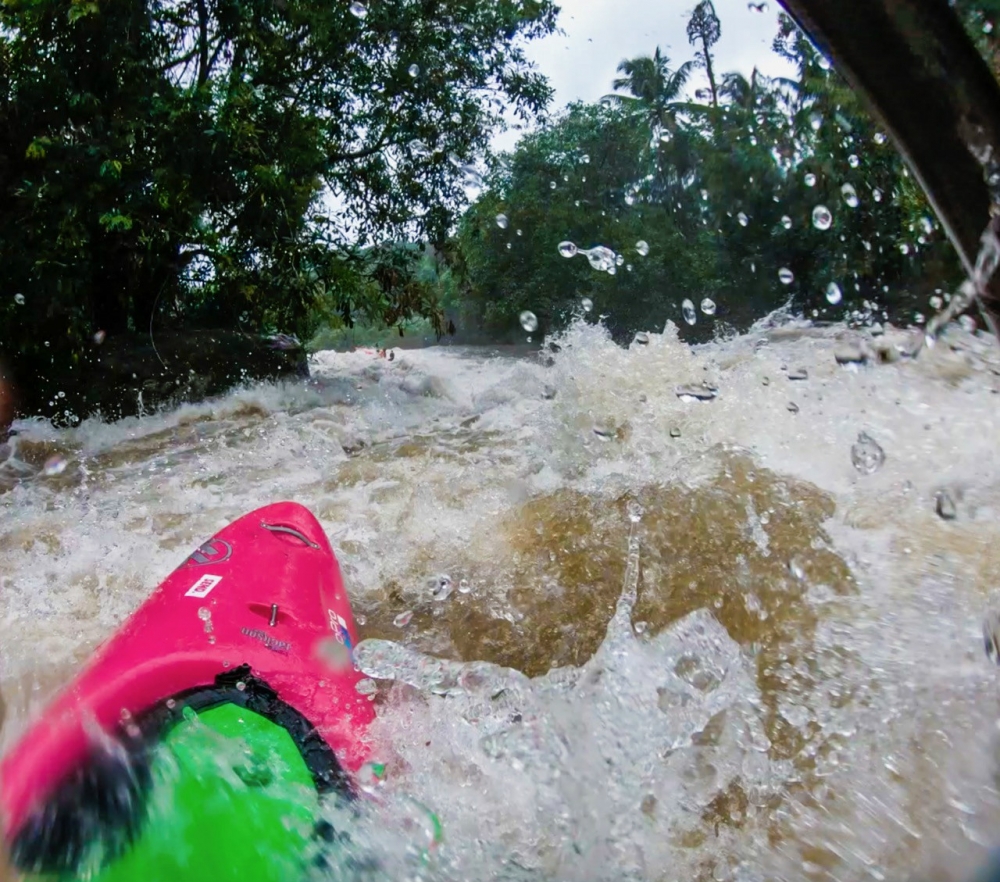
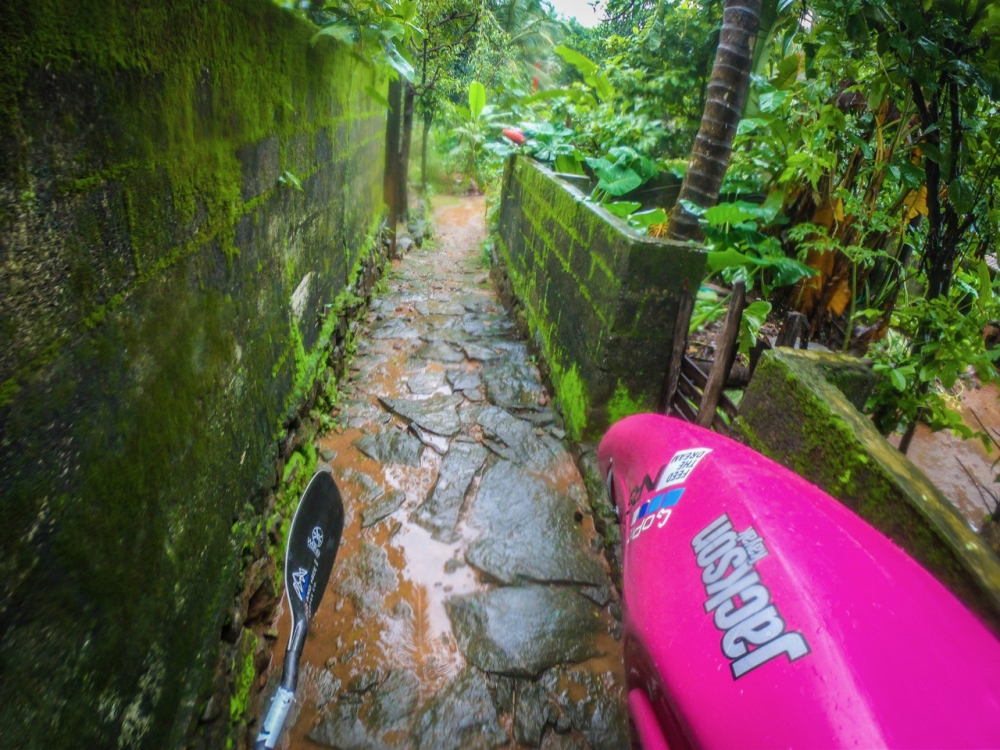

The next day we decided to do the “chill section.” Locals described it as a ‘Class III joy lap.’ Again, take the beta with a grain of a salt. The monsoon season opened its arms sending a deluge of rain that followed us all the way to the put in. By the time we reached the top, the river was three feet higher than the day before, and the Class III Joy Lap became a gripping non-stop roller coaster through trees. It was pretty full on. We started with a big hole surf and swim at the top, as Kalob and Nouria ended up in a hole together. Once we got a grip on what we were in for, it turned into an epic boof-and-rally section, and we headed back up for more. The water had risen another 1.5 feet by the time we finished our second lap.
Runs with more ‘normal flows’ filled the next couple of days and the difference from the flooded river we had paddled days before blew our minds. India’s monsoon season is no joke. The style of paddling was fun boulder garden, with consistent gradient, and some slides and drops in the steeper sections.
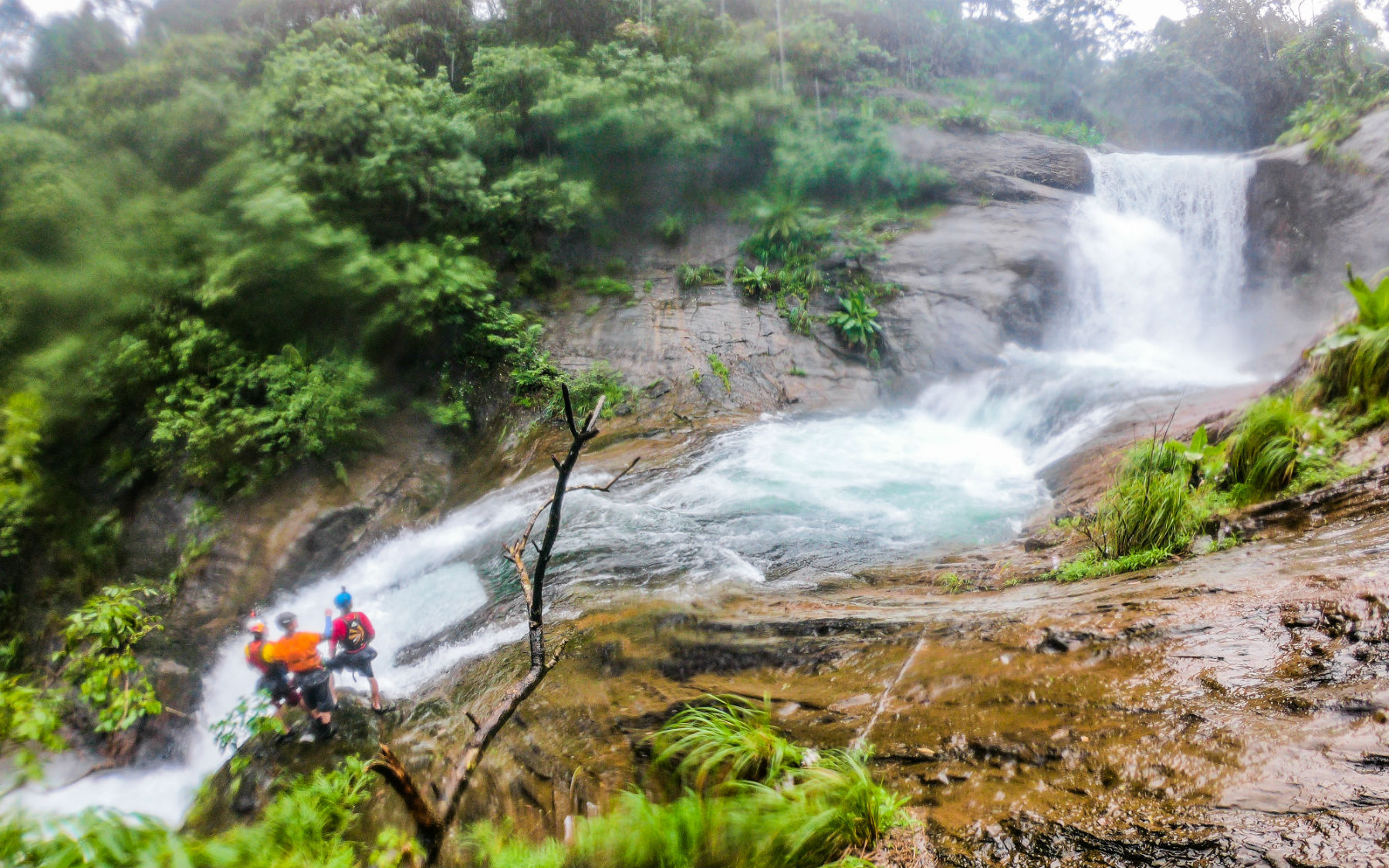
The India lifestyle was quickly growing on me: curry for breakfast, paddle a lap or two, curry for lunch, paddle some more and curry for dinner. Then regroup at the hotel with everyone and make a plan for the next day. It was fun getting to hang out and paddle with a ton of international paddlers, and the local Indian paddlers seemed ecstatic to hang out and share their rivers with us.
By the time our muscles had warmed up to the intensity of monsoon flows, the Malabar River Festival kicked off. With only a couple hours from the inaugural event—the freestyle competition—we shuttled together in two giant buses blasting Indian dubstep (at 7:30 in the morning). The Freestyle event was held on three waves. I appreciated the format because you could use your 45 second time on any or all of the three features. The day ended with a tight finish, though Dane won, I took second and Bren Orton edged Kalob out for third.


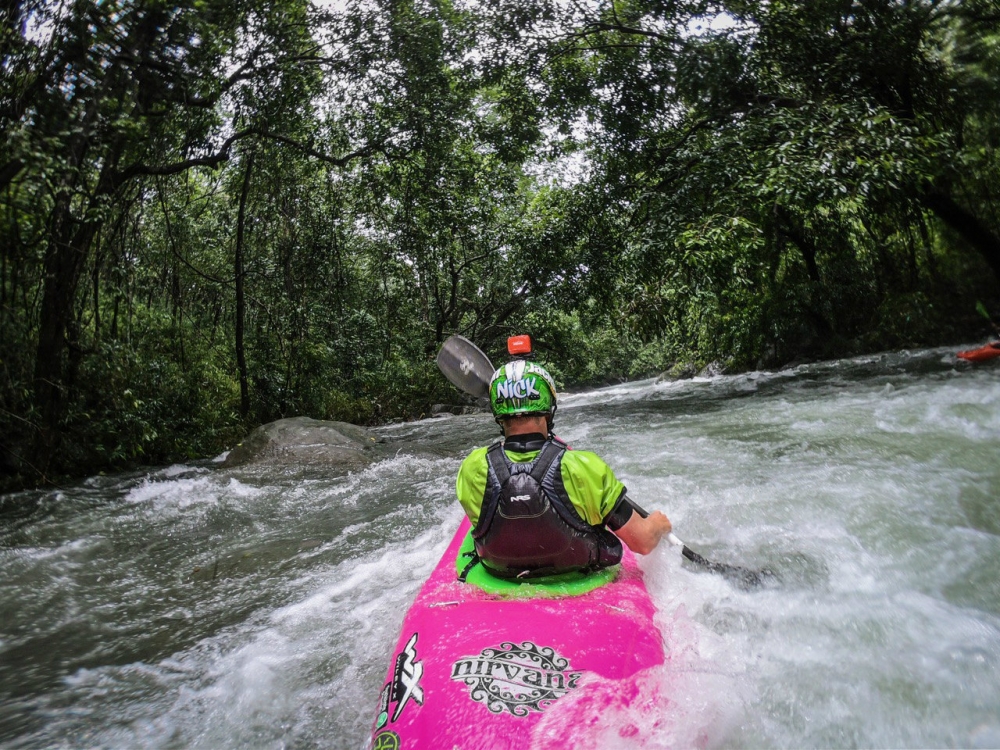
The giant slalom race was next. Starting with a big ramp, the 90-second course featured seven gates spread out downstream. The format: Two runs with your best time counting to secure a place in the top 20 finalists. Paddlers in the top 20 had a single run to get to the podium. The times were tight with top racers from around the world, and the likes of Mike Dawson, Gerd Serrasolses, Aaron Mann and Phillip Baues to name a few. I had a great finals run, though I had a slight spin out only a couple feet before the finish. It was just enough of a mistake to push me into fourth place behind Dane, Gerd, and Mike Dawson.
The third stage of the event was the Boater-X, which was held on the same section as the slalom. Most of the gates were removed and a touch eddy was added to try and build carnage for the crowds. We battled out through three rounds of heats. Though once the dust settled, Mike set the podium with first place, Dane second, and Gerd third with Kalob and myself coming in at fourth and fifth. Boater-X events are always a crowd favorite. People lined the banks of the river to watch four paddlers race head-to-head in a battle for the win. And the crowds in India were a committed bunch, sticking out the event through endless rain. We too, would spend day in and day out in the rain, and with constantly being river rot on my feet became an issue—in case you were curious.

The final event, the Extreme Race, was held on the lower section of the flooded river we had eddy-hopped on our first day. Though this time around it was five feet lower and quite a bit more manageable. It made for a great course, which took most paddlers about 90 seconds to complete. The format was similar to that of Sickline, 20 racers, with head to head times, top ten move on for a single race super finals. Times were tight, separated by mere tenths and hundredths of a second. As I made it to the super final race I decided to put it all on the line and push for my fastest possible line. Though as it turns out, when I push too hard I seem to make enough micro mistakes to cost me a podium finish. I didn’t end up in the top five, though I was still proud of my performance, and stoked to see Olympian Mike Dawson take home his third race win and the overall Champion.
All in all India was an incredible experience. I loved the food, the rivers, and the locals. Friendly, open arms welcomed us. Everyone was super nice to us, very accommodating and happy to see kayakers bring in some tourism to their town. Hats off to the organizers, Manik and Jacopo, for their tireless efforts to put together what is now known as Asia’s biggest whitewater event. I was stoked to be a part of it. And I as boarded my last flight on the 40-hour trip home, I knew I’d be back. “India, thanks for the good times.”
Editor’s Note: Photos and words by Team NRS paddler Nick Troutman.